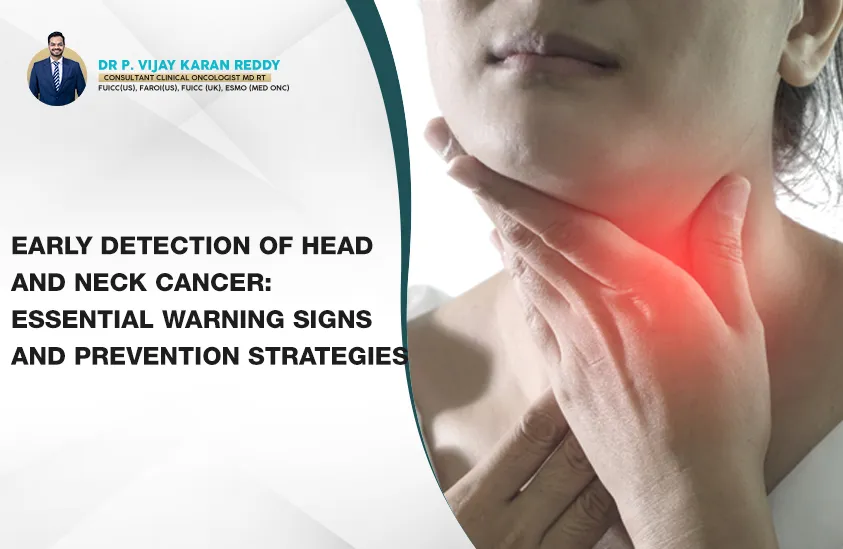Head and neck cancers, a group of malignancies that affect the oral cavity, throat, larynx (voice box), salivary glands, nasal cavity, and sinuses, are among the most prevalent cancers worldwide. Early detection plays a pivotal role in improving treatment outcomes and survival rates. Recognizing the warning signs and symptoms can lead to earlier diagnosis and more effective treatments.
Warning Signs of Head and Neck Cancer
Persistent Sore Throat
A sore throat that does not resolve within two weeks, especially if accompanied by difficulty swallowing, may indicate a serious underlying condition such as throat cancer.
Unexplained Weight Loss
Significant weight loss without changes in diet or exercise routines can be an early indicator of various cancers, including those of the head and neck region.
Voice Changes or Hoarseness
Persistent changes in voice quality or hoarseness that lasts for more than two weeks could suggest laryngeal cancer.
Swelling or Lumps
Any unusual lump or swelling in the neck, jaw, or mouth that persists for more than two weeks should be evaluated, as it could signify cancerous growth.
Ear Pain or Hearing Loss
Persistent ear pain or noticeable hearing loss might be associated with certain types of head and neck cancers.
Mouth Sores or Ulcers
Sores or ulcers in the mouth that do not heal within two weeks can be indicative of oral cancer, particularly if they are painless.
Nosebleeds or Nasal Blockage
Frequent nosebleeds or persistent nasal blockage, especially if only on one side, could point to nasal or sinus cancer.
Prevention Strategies
Avoid Tobacco and Alcohol
Tobacco use, including smoking and smokeless tobacco, is the single largest risk factor for head and neck cancer. Alcohol consumption can further increase this risk.
Maintain Oral Hygiene
Good oral hygiene practices can reduce the risk of oral cancers. Regular dental check-ups are crucial for early detection of precancerous conditions.
Protect Against HPV
Some head and neck cancers are associated with human papillomavirus (HPV) infection. Vaccination against HPV can significantly reduce the risk of these cancers.
Healthy Lifestyle
A diet rich in fruits and vegetables and regular physical activity can lower the risk of developing head and neck cancer.
Sun Protection
Protecting the lips from the sun with a high-SPF lip balm can reduce the risk of lip cancer.
Diagnostic Approaches
Physical Examination
A thorough examination by a healthcare professional, focusing on the head, neck, throat, and oral cavity, can help detect abnormalities.
Imaging Tests
MRI, CT scans, and PET scans are valuable tools for detecting tumors and determining their extent.
Biopsy
A biopsy, the removal of a small tissue sample for examination under a microscope, is the definitive way to diagnose cancer.
Endoscopy
This procedure involves inserting a thin, flexible tube with a camera into the nasal passages, throat, or esophagus to look for abnormal areas.
Treatment Options
Treatment may involve surgery, radiation therapy, chemotherapy, targeted therapy, or a combination of these methods, depending on the type, location, and stage of the cancer.
Conclusion
Awareness of the warning signs and symptoms of head and neck cancer, coupled with preventive measures and regular medical check-ups, can significantly improve early detection and treatment outcomes. Consulting with the Best Oncologist in Hyderabad is a critical step for those exhibiting any of these symptoms.
Early detection through awareness of warning signs, coupled with effective prevention strategies, plays a crucial role in combating head and neck cancer. By engaging in healthy lifestyle choices and seeking prompt medical attention for suspicious symptoms from a renowned center for head and neck cancer treatment in Hyderabad, patients can achieve more successful treatment outcomes and an improved quality of life.


